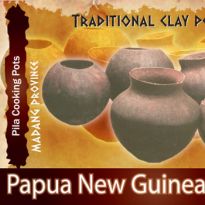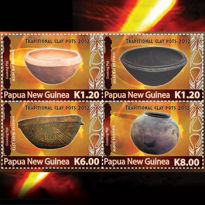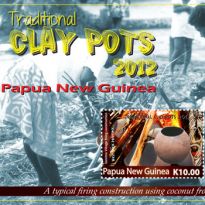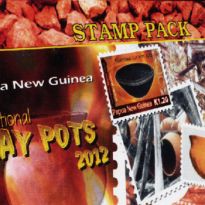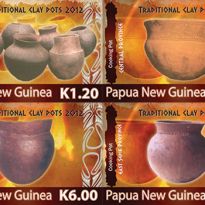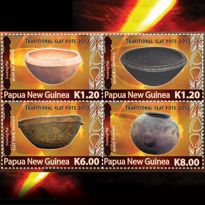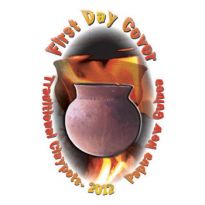Traditional Clay Pots
2012 Releases
Traditional Clay Pots - 2012
Despite being in the 37th year of independence, Papua New Guinea, arguably is still been discovered. Amazingly, halfway around the globe, people are dusting off history book covers to research actual dates when civilization took place, while Papua New Guineans on the other hand are yet to be fully civilized.
The Hagahais of the in-land region of North Coast of Madang are the most recently discovered people on record.
With our traditional ways vibrantly intact, the bustling –in of the western culture at independence caught our traditions and culture napping in its wake. As evident in every aspect of life today, both the traditional and modern technologies are in use, and the existence and use of clay pots are no exception. Accessible to all, clay is the main substance used to mold the various pots.
Varying in shapes and designs, each region in Papua New Guinea has its own method of pot making. Just as various as the shapes, so are their uses.
Some clay pots are used for steam-boiling, others used as storages, while the porous once are used as meat dryers.
Even with the more robust and convenient aluminium vessels introduced, still some favourite dish cooking can never be replaced with vessels other then the clay pots.
The traditional taro pudding (Mona in the Kiriwina dialect) can only be appropriately cooked using clay pots.
Featured on postage stamps overleaf is a variety of clay pots found in different parts of Papua New Guinea.
Acknowledgement
Post PNG would like to thank Crawford House Publishing Pty Ltd. Adelaide SA.5000, Australia, for granting us the right to use the Clay Pot images in this issue.
Stamp Set
K1.20 - Six clay pots from Madang
K1.20 - Clay pot from Central Province
K6.00 - Clay pot from East Sepik
K8.00 - Clay pot from Bougainville
RETAIL PRICE K16.40
Sheetlet
K1.20 - Clay pot from Milne Bay Province
K1.20 - Clay pot from Milne Bay Province
K6.00 - Clay pot from East Sepik Province
K8.00 - Clay pot from Manus Province
RETAIL PRICE K16.40
Souvenir Sheet
K10.00 - A typical construction using
coconut fronds
Technical Details
- Stamp Size
- 28mm x 42.58mm
- Souvenir
Sheet Size - 86mm x 116mm
- Sheetlet Size
- 86mm x 116mm
- Denomination
- K1.20, K1.20, K6.00 & K8.00
- Sheet Contents
- 25 stamps
- Format
- Horizontal
- Perforation
- 2mm
- Colours
- 4 colour Process
- Paper
- Tullis Russel Non Phosphor
- Gum
- Unwatered mark, PVA Gummed
- Printing Technique
- Multicolour Offset, Lithography
- Designer
- Billy John Telek - Post PNG Philatelic Production
- Printer
- Southern Color Print, NZ
- Issue Date
- 11th April, 2012
- Withdrawal Date
- 11th October, 2012

